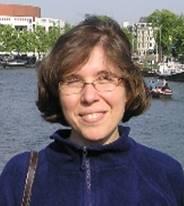
Welcome to 2022!
As we start a new year, I want to remind you that my main goal for this monthly message is to inspire curiosity and foster respect across our directorate. I invite your input on topics that you think would be relevant: Please share ideas for consideration with Connections writer Amy Reed (reedac@ornl.gov).
Your openness on how best to improve our directorate and your willingness to suggest specific measurable steps is greatly appreciated. While I am responsible for executing the changes needed to make our directorate and lab a great place to work, your input is needed along the way. Expect to hear about a call for focus group participation by the end of January; a charge code will be provided for participants.
While more progress is needed, we already have many great practices in place. Here are just a few from FFESD section and group leaders; I know there are many more across the projects and divisions. I encourage you to contact your colleagues directly to learn more.
—Kathy McCarthy, Associate Laboratory Director, January 2022
Hiring talent to create your dream team
“If we want to hire thought leaders, people who want to push the frontiers of the unknown in their field, then we have to be cognizant of their aspirations in our approach to recruiting,” said Ezekial “Zeke” Unterberg, group leader of the Power Exhaust and Particle Control Group.
A key to successfully recruiting PhD talent is avoiding an aggressive approach, said Dave Pointer, section head of the Advanced Reactor Engineering and Development Section in the Nuclear Energy and Fuel Cycle Division. “In my experience, when someone is recruited too aggressively, the implication is that it is not a two-way conversation. People who get a PhD to go into research want to help define the role as opposed to being told what the job is.”
We asked Dave and Zeke to share their top tips:
Take advantage of invited talks. “Every time I speak, I share in my introduction what excites me about my section’s research and our contributions to the field. Then I mention that our team is rapidly expanding with positions opening in the next six months,” Dave said. “Usually several audience members will ask -for more information after my talk.”
Frame the job posting thoughtfully. “When I write a job posting, I try to avoid making it a list of tasks and instead convey the aspirational side of the position to attract thought leaders,” Zeke said. “I try to capture how you can be part of this research, to push the frontier, to make an impact in this field. If we want to attract thought leaders as opposed to taskmasters, our job postings need to reflect that.”
Use social media to promote an opening before making a cold call. “I’ll post a position on social media and let it circulate for a week before calling someone directly. When I make the call, I’ll say, ‘I don’t know if you saw my post on LinkedIn or Twitter, but we have an opening that might interest you,’” Dave advised.
Make it a two-way conversation. Dave noted that in his first contact with someone he is recruiting directly, he asks open-ended questions. “Asking open-ended questions allows them to frame the position. What do you want to accomplish with your research? What goal do you most want to accomplish in the next five years? What do you need to get there?”

Strengthening connections within groups
Another theme expressed across FFESD is the benefit of connections between staff at the group level. We asked group leaders Arzu Alpan, T. Jay Harrison, Arnie Lumsdaine, and Joel McDuffee to share their ideas and techniques.
Make time for group meetings. “It may seem like a simple thing, but holding monthly meetings is effective at forming connections,” Arnie said. “I meet one-on-one with each group member, and we are creative about getting together as a group – such as meeting outdoors in a park. Everyone always says afterward that taking time to meet is worth it, that it is beneficial.”
Relocate offices to keep group members in proximity. “We do a lot of brainstorming as a group, and we work best as a team when our offices are located close to one another,” Joel said. “My hope is that our directorate can reconfigure workspace in the coming year so that each group is consolidated in one place.”
Engage individuals in group meetings. “I take steps to ensure that each voice is heard when I hold group meetings,” Arzu said. “I ask members to talk about specific topics at upcoming meetings and allocate time for their contributions, thoughtfully call on individuals to get their input, and give sufficient time to them to think and respond after asking questions. Inviting members to speak helps us to hear every viewpoint.”
Use development plans to connect to opportunities. “One of the most useful processes I’ve found as group leader is for each person to create an individual development plan,” T. Jay said. “It is not a formal performance measure. It is a way for them to inventory what interests them and communicate to me how I can help position them for opportunities they want to pursue.”

